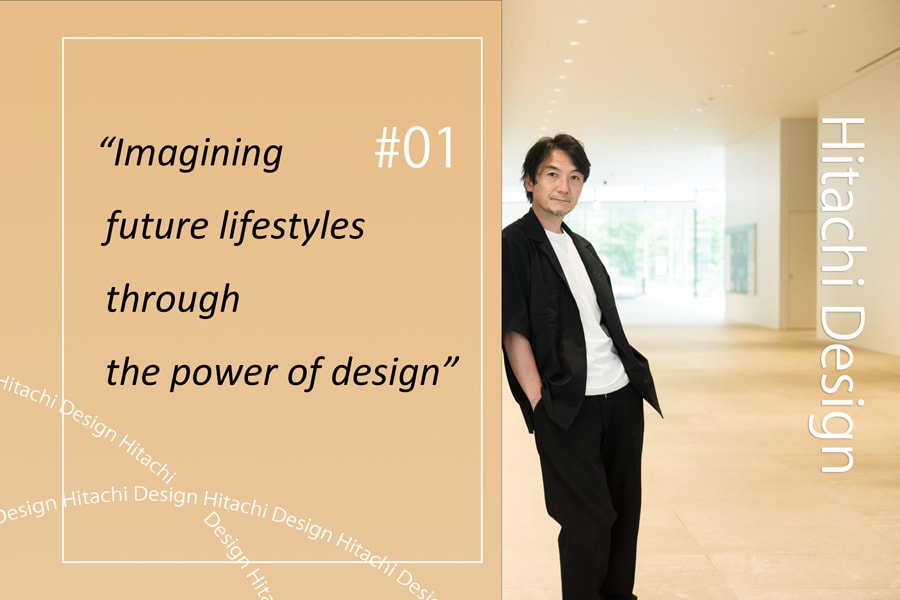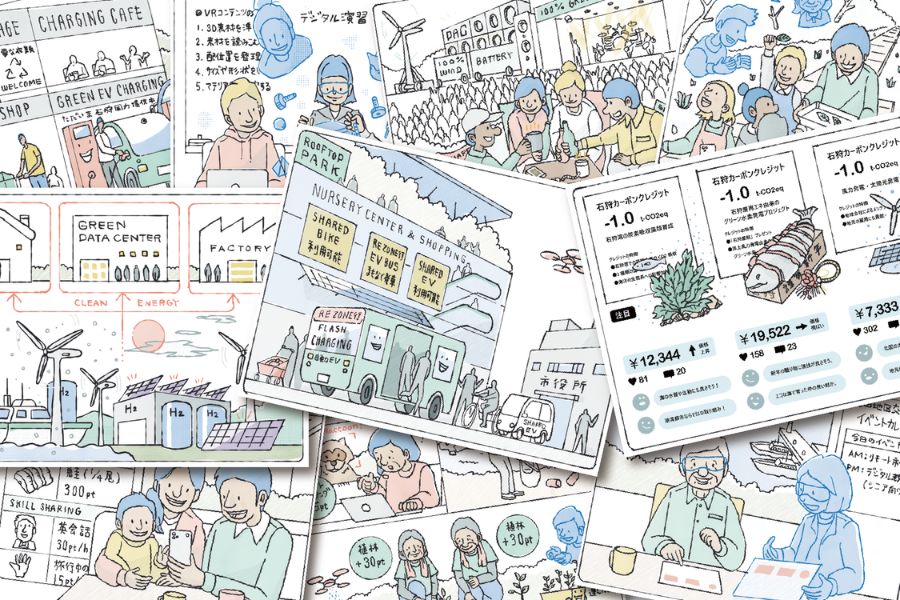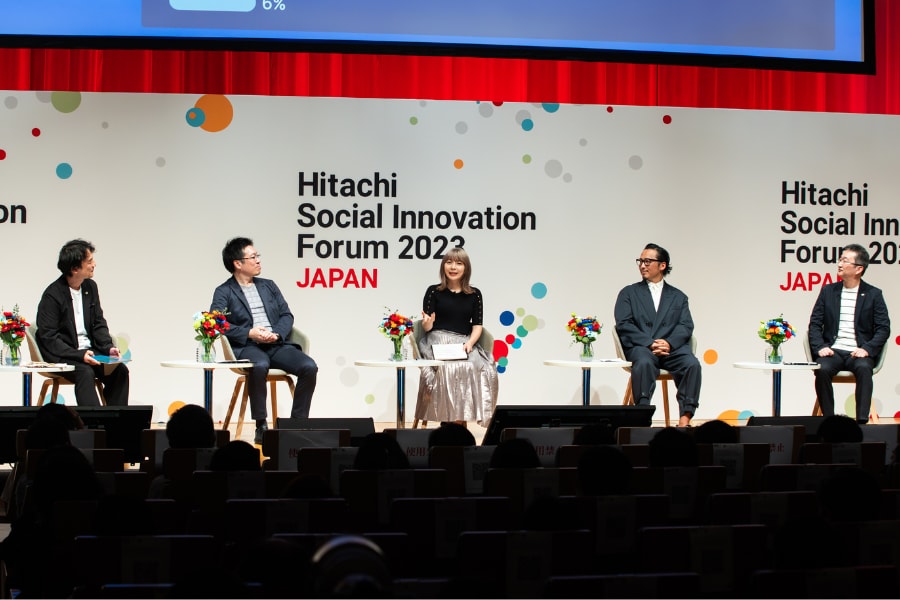Supporting the Supply of Energy in Times of Disaster with EV Batteries
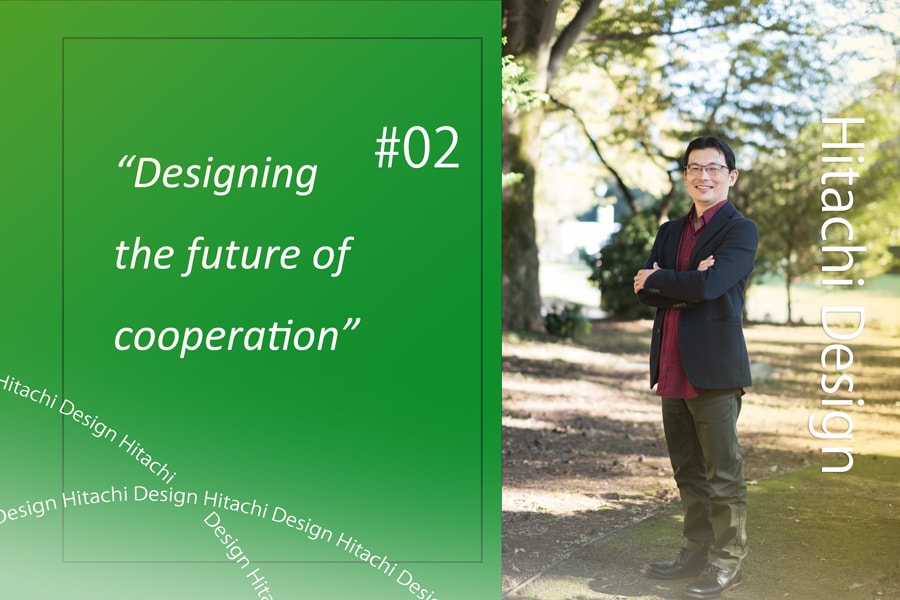
Reimagining electric vehicles (EVs), which are a means of transport and haulage, as “moving storage batteries” to be used in times of disaster… this is a new social system being designed by Toshiomi Moriki, a researcher of Hitachi.
In the past, the word “design” focused on the design of visible objects such as products and graphics. Today, however, the scope of design has expanded to include services, systems, and visions, and design is also being used to solve social issues.
This article is an interview with Moriki, who is working on the design of a new system called “EV Solution for Disasters,” regarding what he is focusing on when designing social systems and what challenges he faces.
Encountering a job that tackles social challenges
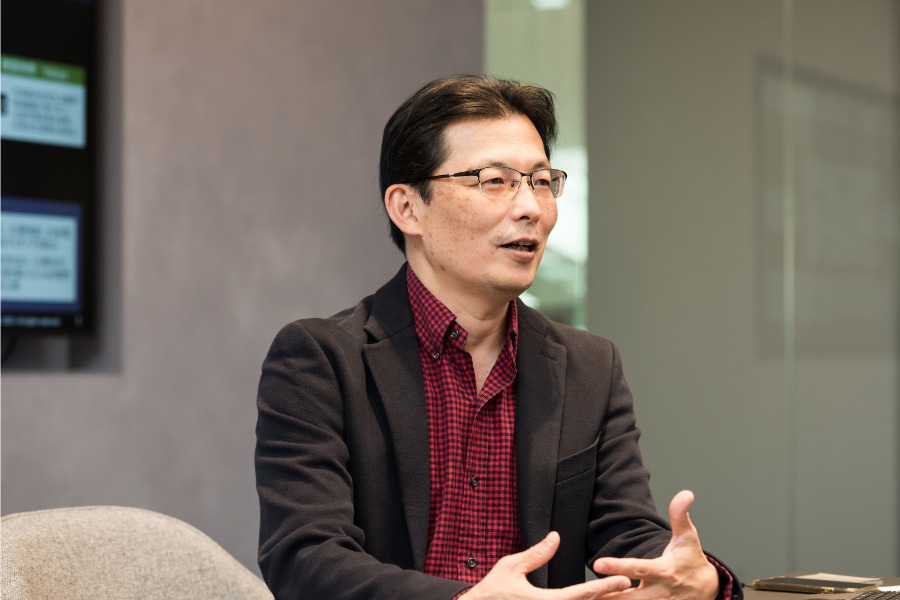
--Please tell me about your career path up to the point that you became involved in the design of social systems.
Moriki: I was hired by Hitachi in 1999 and was assigned to the Central Research Laboratory. I have a master's degree in information engineering and was involved in computer development for about 15 years after joining the company. At that time, I found joy in pushing the limits of technology, such as in making computers faster.
Then, in 2016, I was transferred to our North American office for a year. This office is in charge of service and UI design for general corporate clients. I was impressed by their startup approach of solving social challenges by leveraging cutting-edge technology.
After coming back to Japan, I started working at the Design Center, where researchers and designers work together, and I started thinking about new social systems while having conversations with local governments and residents. Thanks to my research activities, I often think about how I can have a positive impact on the people around me.
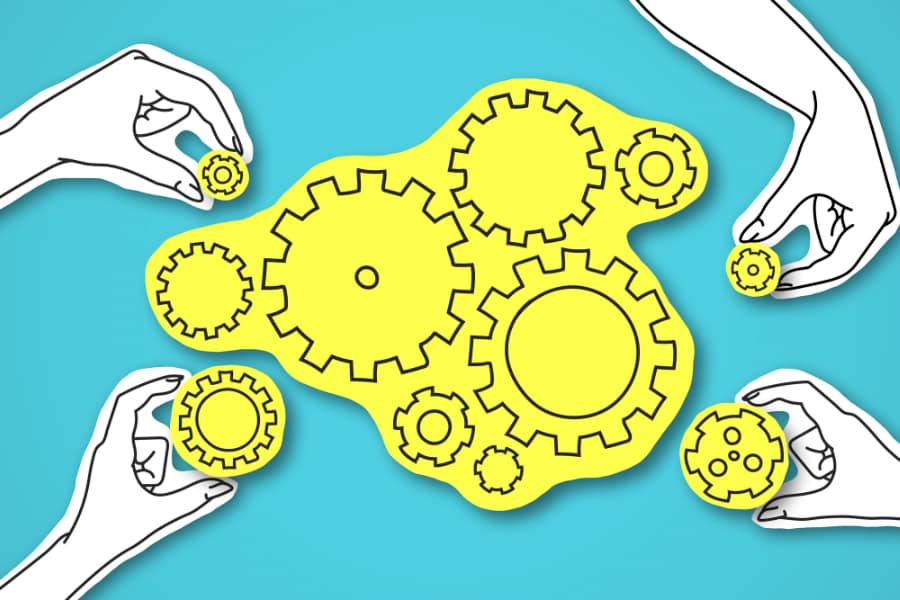
--Please tell me about your current job.
Moriki: Every day I use design concepts to solve social issues in terms of the big picture.
As society faces various challenges, such as global warming, I think about how we can ensure a stable energy supply and how we can incorporate renewable energy into social systems. We are engaged in discussions with electric power companies, local governments, and residents to design a new form of society.
Reimagining society from a new perspective
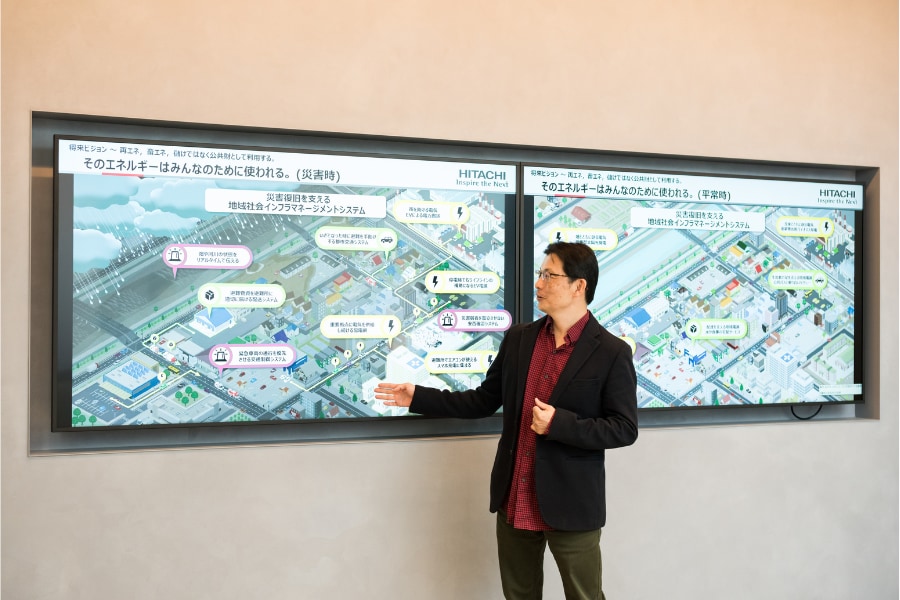
--Can you please tell me about the “EV Solution for Disasters” that you are working on?
Moriki: This solution supports the supply of energy in times of disaster by matching electricity providers and users, viewing EVs not merely as a means of transportation but rather as a “moving storage battery.” Up until now, EVs have been looked at in terms of their range, but in fact, when viewed as a storage battery, a single EV can supply a family with a week’s worth of electricity.
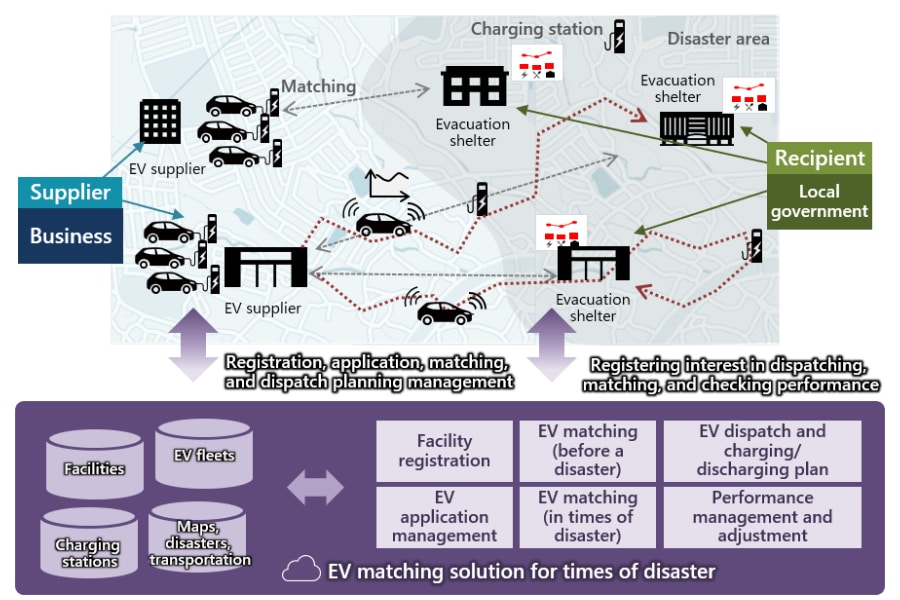
We recruit businesses that can provide EVs after a disaster occurs and then use the information on their application forms to calculate the best match with evacuation shelters. EV dispatch planning is performed to minimize the lead time needed for starting the supply of power and to ensure energy sufficiency in times of disaster.
Via testing conducted in Kokubunji-City, Tokyo, we discovered that even the current penetration rate of EVs and charging stations is sufficient to supply the necessary power to evacuation shelters in a localized power outage.
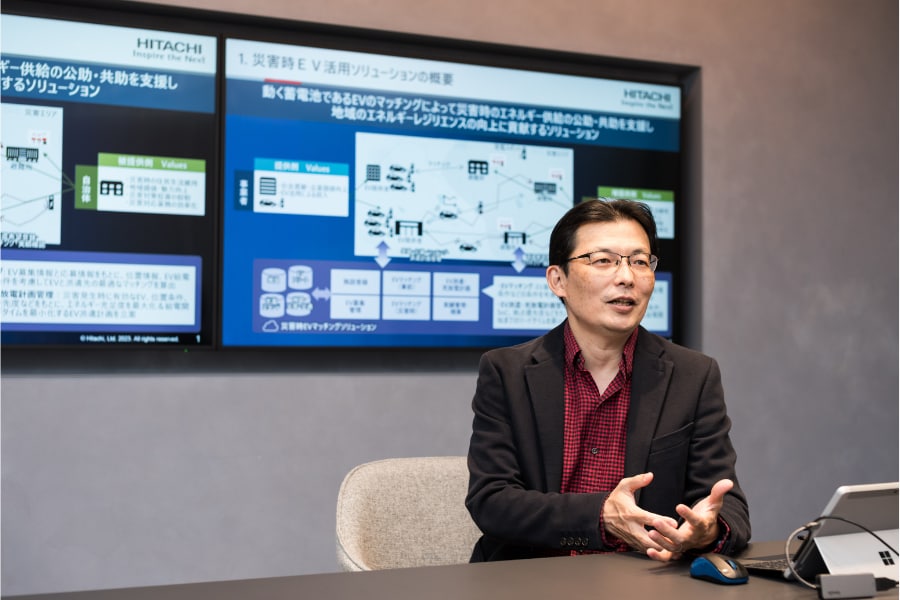
--Why did you land on a solution for disasters?
Moriki: We know that action on climate change and energy optimization is necessary, but it is an issue that is hard to comprehend. The main reason is that, when we think about disaster preparedness in isolation, it can become an issue that we can understand, as in, “It would be a problem if there was no electricity when a disaster occurs.”
The level of interest of local governments and residents in disaster preparedness and concern for disasters is clearly different, and we have had a proactive response from them. There are already technologies that can be used to solve energy problems. As a result of my continuous search for ways to leverage this technology in society, I might have found a solution in the form of the “EV Solution for Disasters.”
Creating a new infrastructure for “local production for local consumption”
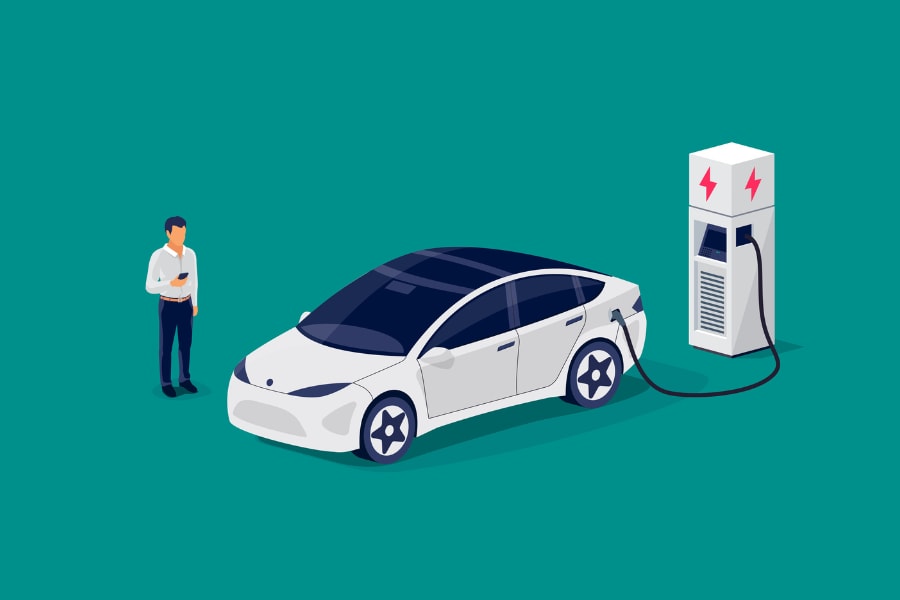
--What were the difficulties that you encountered moving the project forward?
Moriki: The major difficulty is that it is a system that it involves a tremendous number of parties. Electric power companies are of course involved, but there are also many other parties involved, including local governments, that are taking action to prepare for disasters, along with companies and individuals who own EVs. What is required in the event of a disaster also varies. Even within the same local government, there is a tendency to have different values regarding disaster preparedness depending on whether or not there have been major disasters in the past.
It is important to continue to communicate the value of our technologies and systems until they reach a wide range of relevant parties.
--What is the outlook for the future?
Moriki: The “EV Solution for Disasters” concept of storing electricity generated during normal times in EVs and using that electricity during an emergency can be applied in a variety of ways. For instance, if solar power generated during the daytime could be stored in EVs and used at night, a world in which electricity generation could be reduced during summer could be realized. By better coordinating electricity in each region, it may be possible to adjust for peaks and valleys in electricity demand. At first glance, it may look as if we are doing disparate things in different regions, but in fact, taken as a whole, EVs could become a new form of energy infrastructure.
Above all else, by coming to view energy not as something that is given to us by someone else but rather as something that is generated and regulated by ourselves for “local production for local consumption,” we may be able to create a new relationship with the local community. It is a tremendous challenge, but I believe it is worth the effort.
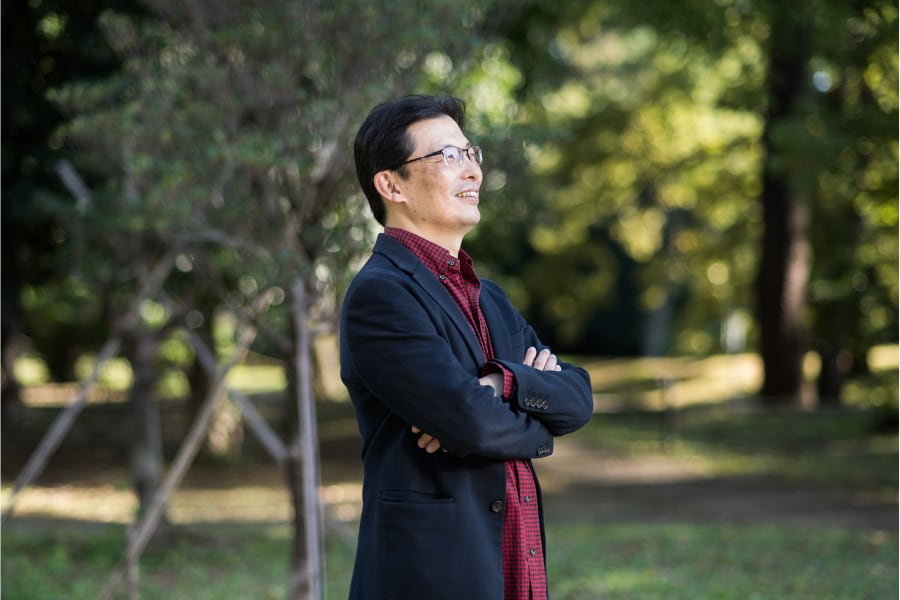
In addition to designing solutions to social challenges, what else do you value?
Moriki: “Don't pretend to be something you are not.” In the course of a project, you will exchange opinions with various stakeholders, and sometimes you will encounter obstacles. However, when in doubt, go back to what you really want to do. I continue to say “I want to do it” without doubting what I truly want to do. That is the driver that will move the project forward. I also hope that I can then involve a variety of people in the project without thinking that I can do everything by myself.

